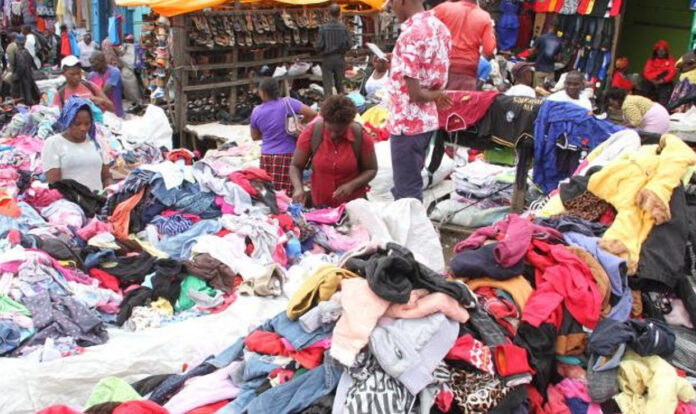The mitumba wholesale and retail business is one of the most lucrative lines of business that you can pursue. It is therefore not so far-fetched that this sector is also a leading employer.
According to the data from the Institute of Economic Affairs (IEA), the mitumba sector employs over 2 million people. In addition to this, the sector is one of the most revenue generating for the national government.
And with more people joining the trade daily, one of the biggest questions you may have is on how you can join and succeed at it.
The first step is in knowing where you can source for your mitumba. There are three strategic places in Nairobi you can target. These are:
Toi market
Toi market is located in the outskirts of Kibera slums. Here second hand clothes are relatively cheap. But the clothes at the stalls are a bit overpriced. While at Toi, be careful where to buy clothes because of different pricing. A nice outfit can be bought at Sh. 200.
Muthurwa
Muthurwa market is located in Nairobi’s downtown (Railways). Second hand clothes here are sold at cheaper prices, most of them going for less than Sh. 400. The market is easily accessible, i.e. walking distance from the CBD. This market is as well operational 7 days a week 12 hours a day.
Gikomba
Located outside Nairobi’s CBD, along Digo Road in Majengo area, is the busy Gikomba Market. The market is easily accessible from town, one can walk there or board a matatu for Sh. 20.
Here you can buy a blouse for as low as Sh. 20 and a trouser or a dress for as low as Sh. 100. The market is usually operational 7 days of the week, more than 12 hours a day.
I started paying tithe to stop going broke, but I’m still broke even after paying
You can get constant supply for your mitumba business in Gikomba any moment there is demand for clothes by your clients.
For only Sh. 2,000 you can have enough stalk to get your business going. ““I’d buy the dresses for Sh. 50 to Sh. 100, then sell them for Sh. 500 to Sh. 600 bob,” says Grace Adek.
The profit margins you’ll be looking for
Once you identify your market, you should examine the type of profit margins you will be aiming to score. These will usually range from 40 to 60 per cent. If you go wholesale and decide to import, these are the figures you will looking at:
- 90 US cents: Estimated price of a kilo of donated and sorted mitumba goods
- 3 to 5 weeks: Time it takes for used clothing to be sorted, graded and ready for shipment
- 4 to 6 weeks: Time it takes for a shipment to arrive at Mombasa.
- 45 kg: weight per bale
- 550: Number of bales in one container
- US$50,000: Estimated cost to purchase a 40-ft container of merchandise
- Sh. 1.5 million: Estimated cost to clear a 40-foot container
- Sh. 1,500 to Sh. 50,000: Range of cost per bale
- Sh. 5,000: Annual charge for City Council business permit
- Sh. 15,000 to Sh. 30,000: Estimated rent for a standard stall in the CBD
- 50 to 100 per cent: Estimated profit margin per mtumba item
- Zero: Tax levied on individual mitumba items
A stock worth between Sh. 200,000 and Sh. 300,000 will give you a maximum profit of between Sh. 100,000 to Sh. 150,000. A bale costs anywhere between Sh. 1,500 to Sh. 50,000.
The cheaper bales are for items that aren’t in high demand like ties and men’s coats. The expensive bales are for trendy items of camera 1 and 2 – items like designer jeans and jackets. The lingo for the grades is ‘camera 1’ for Grade A, ‘camera 2’ for Grade B, ‘camera 3’ for Grade C and ‘wa kufagia’ for Grade D.
Marketing
In this age of technology, you must introduce new ways of marketing your stock. Use Facebook, joining Facebook groups, customize your skiza tone, and utilize your Whatsapp, Instagram, and mass SMSes.
“Call me on my lines and the voice over directs you to my business name, where we are located and how you can get in touch with us. That’s how my ‘Skiza’ has been customized. We are on Facebook where we have a group of over 231,000 active members,” Grace Wambere, who ran the Mitumba Chap Chap business shared in a previous media interview.
“Our shopping bags, employees overalls including reflector jackets for our riders are all branded. And of course there is referrals by word of mouth.”








